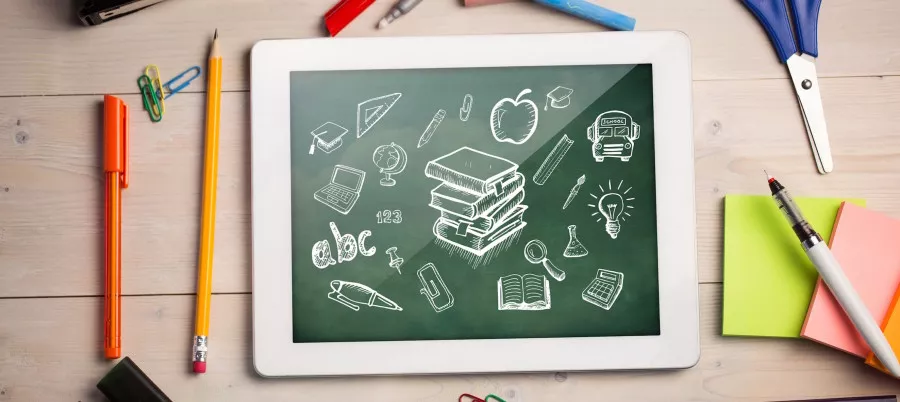For years, educators have been buzzing about the importance of “digital literacy.” But what do those words really mean? According to the American Library Association, digital literacy is “the ability to use information and communication technologies to find, evaluate, create, and communicate information, requiring both cognitive and technical skills.” A growing reliance on web-based testing has forced many schools to confront the lack of digital literacy among their students and staff. And, as the COVID-19 outbreak showed us, assessing digital literacy is more important than ever—for students and for educators.
What Students Need to Know
So what kind of tech savvy do students need to succeed? Beyond the rudimentary skills needed to answer online test questions, students must understand how to do online research and use a wide array of digital tools. They should know how to create video and audio, participate in video conferencing, share and collaborate remotely, and use slideshows and online posters.
And, as the COVID-19 pandemic has made painfully clear, remote learning skills are essential today. Even before the pandemic, the popularity of online classes had been growing exponentially as a complement to classroom learning. This includes taking online college-level classes and enriching learning through webinars. Both require the ability to manage audio and video on digital devices, submit homework and classwork online, communicate with the teacher and classmates remotely, and stay on top of grades.
We can also start preparing students now for college and career tasks, such as writing resumes, preparing an online curriculum vitae, connecting digital devices to local area networks (LANs) and Wi-Fi, and managing the security of their personal device and information.
How to Determine Your Assessment Needs
Before you can choose an assessment tool, it’s important to figure out your goals. Consider the following questions:
How comprehensive should the tool be? Do you want a tool that’s diagnostic, actionable, a simple checklist, or a template for the creation of your own tool?
 Jacqui Murray
Jacqui Murray
Is computational thinking important? Do you want to assess knowledge and determine ability to solve tech problems, think critically, and maybe even code?
Do you need a scope and sequence? Do you want an assessment that determines shortfalls and then provides a road map for how to get from here to there, or do you prefer a one-and-done report?
Do you need teacher or district dashboards? Are you going to measure a whole classroom of students? Or is this more for individual knowledge?
Do you want the ability to integrate with your learning management system (LMS)? Many tools provide this option, but the simplest reports probably won’t.
Choosing Your Assessment Tool
The four tools below are varied in depth, time demands, cost, and impact on your life. So pick the one that best meets your goals.
1. Learning.com’s digital literacy assessment
Both diagnostic and actionable, this assessment focuses on tech knowledge required for students to succeed in college and career, it provides insight into how students’ digital literacy stacks up in relation to the 2016 International Society for Technology in Education (ISTE) Standards for Students. It’s easy to set up and administer, provides a dashboard to track student progress, and is compatible with all desktop and mobile devices. Once a picture is available of a student’s digital literacy, both teacher and student can create a plan to fill gaps and reach specific goals. learning.com/dla
2. Northstar Digital Literacy Assessment
This program starts by defining the basic skills needed to use a computer and the internet in daily life, employment, and higher education. Then self-guided online modules assess the ability of the user to perform these tasks. Test-takers can receive digital badges and/ or certificates when they pass assessments (possibly at a Northstar testing location). digitalliteracyassessment.org
3. Technology self-assessment tool
Designed to assess teachers’ skills, this free tool collects data on educators’ use of technology, access to tech professional development, and facility with basic skills, including hardware and infrastructure. It’s a bit dated, but it provides a template for creating a schoolwide technology assessment that will collect and curate results.
4. Florida Gulf Coast University technology skills self-assessment
This online, self-guided assessment is free and takes students through all technology skills required for everything from online test-taking to college and career. It also questions users on their knowledge of their digital devices— everything from its operating system to its internet connection. While it is dated, it covers all the basics and provides a summative report at completion.
Every school I work with tells me there is a growing gap between the tech knowledge of their most comfortable and least tech-savvy teachers. This affects the way a school makes use of its investment in technology. To use technology as the transformative educational tool it can be requires an understanding of the tech knowledge of both teachers and students.
Jacqui Murray has been teaching K–18 technology for 30 years. You can follow her on Twitter @AskaTechTeacher.


